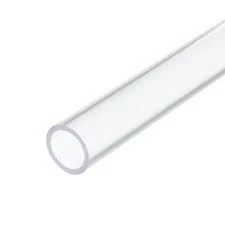Dec . 12, 2024 11:06 Back to list
hdpe duct pipe
Understanding HDPE Duct Pipe Properties, Applications, and Benefits
High-Density Polyethylene (HDPE) duct pipe is a popular choice in various industries due to its superior properties and versatility. Known for its strength, durability, and resistance to chemical exposure, HDPE is a thermoplastic made from petroleum. Its applications range from telecommunications to drainage systems, making it an indispensable material for modern infrastructure.
Properties of HDPE Duct Pipe
One of the most notable properties of HDPE duct pipe is its resistance to environmental stress. This includes resistance to temperature changes, ultraviolet (UV) light, and chemicals. Unlike traditional materials such as PVC or metal, HDPE does not corrode, rust, or become brittle over time, making it ideal for underground installations where exposure to moisture and soil can be detrimental.
Another significant property is its flexibility. HDPE duct pipes can be bent and shaped to fit various installation configurations without compromising their structural integrity. This feature is particularly beneficial in areas with challenging terrains, where traditional rigid pipes may face installation difficulties.
Moreover, HDPE duct pipe boasts excellent impact resistance, which minimizes damage during transportation and installation. Its lightweight nature facilitates easier handling and reduces transportation costs, making it an economical choice for construction projects.
Applications of HDPE Duct Pipe
HDPE duct pipes have a wide range of applications across various sectors. In the telecommunications industry, they are commonly used to house fiber optic cables, protecting them from physical damage and environmental factors. The smooth inner surface of HDPE reduces friction, thereby enhancing data transmission speeds while minimizing signal loss.
In the municipal sector, HDPE duct pipes are increasingly used in water and wastewater management systems. Their resistance to chemicals makes them suitable for transporting corrosive substances, and their flexibility allows for easier installation in hard-to-reach areas.
hdpe duct pipe

Additionally, HDPE duct pipes are used in the construction of drainage systems. In both stormwater management and land drainage applications, they help prevent erosion and manage excess water efficiently. Their lightweight yet strong nature ensures longevity and reliability, essential for infrastructure related to public safety.
Furthermore, the agricultural industry utilizes HDPE duct pipes for irrigation systems. They provide uniform water distribution while being resistant to clogging, enhancing crop yields and promoting sustainable farming practices.
Benefits of Using HDPE Duct Pipe
The benefits of using HDPE duct pipe are numerous. Firstly, the environmental impact of producing and utilizing HDPE is relatively lower compared to other materials. It is recyclable and can be reused in various applications, promoting sustainability in construction practices.
Secondly, the longevity of HDPE duct pipes reduces the need for frequent replacements, leading to lower lifecycle costs. Their durability ensures they can withstand the rigors of various environmental conditions, thereby maintaining functionality for decades.
Moreover, the ease of installation associated with HDPE duct pipes leads to significant time and labor cost savings. Crews can complete projects faster due to the lightweight nature of the material and the fewer joints required during installation.
Lastly, the versatility of HDPE duct pipes allows for customization based on specific project needs. Whether it’s adjusting the diameter, wall thickness, or length, HDPE pipes can be manufactured to meet precise requirements, making them ideal for a wide array of applications.
Conclusion
In conclusion, HDPE duct pipes represent a modern solution to many infrastructure challenges faced today. With their unique combination of strength, flexibility, and resistance to environmental stressors, these pipes are set to play a crucial role in various sectors including telecommunications, construction, and agriculture. As industries continue to prioritize sustainability and efficiency, HDPE duct pipes are sure to remain at the forefront of innovative solutions for the future. With improvements in technology and material processing, the continued adoption of HDPE will only grow, highlighting its endless potential and applicability in a rapidly changing world.
-
High-Quality PPR Pipes and Fittings Durable ERA PPR & PVC PPR Solutions
NewsJul.08,2025
-
Black HDPE Cutting Board - Durable, Non-Porous & Food Safe HDPE Plastic Cutting Board
NewsJul.08,2025
-
High-Quality CPVC Panel Durable HDPE & PVC Panels Supplier
NewsJul.08,2025
-
Double PE Welding Rod Supplier - High Strength, Durable & Versatile Welding Solutions
NewsJul.07,2025
-
High-Quality PVC-O Pipe Supplier Durable 75mm PVC Pipe & Connections Leading PVC Pipe Company
NewsJul.07,2025
-
HDPE Drainage Pipe Supplier – Durable & Corrosion-Resistant Solutions
NewsJul.06,2025

